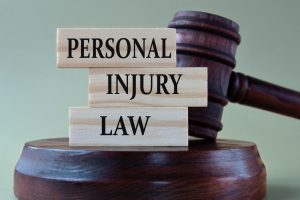According to the Consumer Product Safety Commission (CPSC), each year, consumer products contribute to approximately 23,000 deaths and 31 million injuries in the U.S. Consumer protection laws exist to safeguard the public against unsafe or defective products by ensuring manufacturers adhere to certain safety and quality standards and refrain from deceptive or fraudulent business practices.
However, where consumers are injured due to their purchase, they may have cause to bring a civil action against the manufacturer or retailer in the form of a product liability claim. If successful, they may receive compensation for the losses they incurred.
In this article, we will explore the legalities of a product liability claim and the elements that are required to succeed as an injured party.
Defective Product
Product liability is generally considered to be a strict liability offence. This means that there is no need to establish negligence on the part of the defendant. Instead, the basis of a product liability claim centres on proving that the product was defective. This requires one of the following criteria to be met:
- Design defects: These are inherent defects in the design of the product. As these flaws exist before manufacturing, an entire product line can be unsafe or dangerous to consumers.
- Manufacturing defect: Here the defect arose during the manufacturing of the product, deviating from its design. The defect, and associated danger, may affect some or all of the products produced.
- Marketing defect: This arises when consumers are not adequately warned about the product’s potential risks or provided with adequate safety instructions for its use.
Common examples of defective products include defective toys, baby equipment, tools, appliances and medicines. An experienced personal injury lawyer, such as one at RHHK, can assist their clients in establishing the exact nature of the defect that caused their injuries, helping them form the basis of their product liability claim.
Causation
Having established the product was defective, a claimant will also need to prove that their injuries directly resulted from that defect. To establish this causal link, a claimant may gather evidence such as expert testimony or medical evidence which demonstrates how the defect caused their injury. For example, a medical professional may highlight that the injuries sustained by the claimant are typically consistent with those caused by the type of defect present in the product.
Damages
If successful in their claim, a defendant may be ordered to pay an individual damages compensating them for the losses they have incurred as a result of their injury. The defendant in this case may be the manufacturer, product designer, distributor, or retailer. Damages in a product liability claim may include the following:
- Medical expenses
- Property damage
- Disability costs
- Loss of income
- Pain and suffering
- Permanent disfigurement
These damages take into account both the economic and non-economic losses commonly suffered by a claimant in a product liability claim.
By establishing the requirements prescribed by law, claimants can feel confident in proving their case and receiving the justice and compensation they are entitled to in a product liability claim.





















